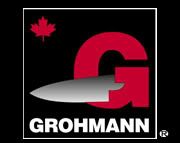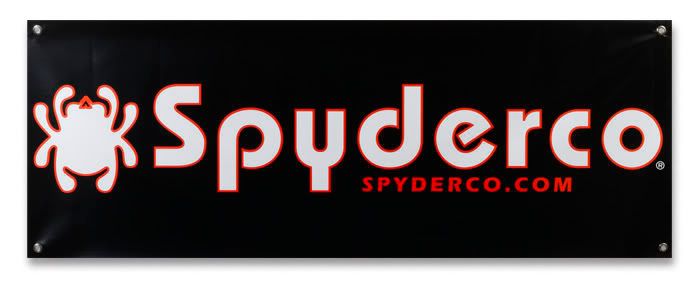The little .32 S&W (Short) has some interesting ballistics from a 3 1/2" barrel. 88-grain Remington-Peters factory fodder runs about 657 fps. 85-grain Winchester-Western runs about 679 from the same tube. Energies produced are about 84-1/3 fpe and 60-2/3 fpe respectively. Place this energy on a .311"-.314" diameter bullet, and - Plunk! These should stop either an enraged field mouse or put "the hurts" on most garden pests without threatening to put a hole in the neighbor's house! Moles, ground hogs and other aberrant vermin, beware! No matter what anyone says, these little loads beat the daylights out of the .22 handgun when it comes to close-range pest eradication!
When it comes to the .32 S&W Long, modern propellants make this cartridge deliver quite a "nasty-gram" at close range! If the pests, are between 25 and 50 pounds, the .32 S&W Long should get the job done. Factory loads hve a bit more "oomph." From a 2" barrel a hefty 98-grain Remington RNL runs 632 fps and provides 87 fpe and the 98-grain RNL provides 626 fps and about 85 fpe. You must bear in mind that these loads were designed with the weaker, break-top revolvers in mind.
I frequently see 98-grain RNL ahead of 3.5 grains of Unique, delivering 979 fps and about 99 1/2 fpe from a 6" barrel. While not earth shaking, it can put down many a good-sized varmint quite easily.
I want to take the opportunity today to address those that handload for the .32 S&W Long. This is where the cartridge has an opportunity to "step from the shadows" and make a statement.
Those of us that are over 50 years of age, or have made an in-depth study of handloading, are quick to realize that the .32 S&W Long, while an extremely accurate cartridge, can be loaded to some pretty respectable power levels. Now this shouldn't be seen as a license to "firewall" the cartridge, ignoring the requisite prudence and reason regarding safety. On the contrary, the very careful approach of increasing charge levels, while keeping a sharp eye for excessive pressures. (e.g. flattened primers, excessive leading, stressed cases, etc.) A 1968 copy of Handloader magazine offered the following handloads for the .32 S&W Long.
WARNING! These loads are only suitable for use in modern, solid-framed revolvers in good condition! the following loads may, or may not, be safe in your particular revolver! Use caution when approaching maximum loads!
Note: All of the bullets used were of the Round Nosed Lead variety.
Bullet Wt. Powder Charge Velocity
Lead 89 Bullseye 1.5 695
Lead 89 Bullseye 2.0 745
Lead 89 Bullseye 2.5 880
Lead 89 Bullseye 3.0 1,010
Lead 98 Bullseye 2.0 770
Lead 98 Bullseye 2.7 910
Lead 98 Unique 3.0 735
Lead 98 Unique 4.0 940
Lead 98 Unique 4.3 1,010
Both loads yielding the 1010 fps with both propellants are maximum loads. If you look carefully, you'll notice that the 89-grain maximum load yields 201.6 fpe. That, sisters and brothers, isn't the earmark of a "flyweight" cartridge, suitable only for dispatching rats! This particular load can serious medicine for a vast number of household/garden/barnyard purposes. This particular load would be an excellent choice for the elimination of skunks, nutria, large (harbor) rats, opossum and the like.
The 98-grain, 1010 fps load yields a healthy 220 fpe! Is it any wonder how so many feral dogs, foxes, bobcats, and other larger vermin can be dealt a quick death blow with this potent load. I wouldn't be a bit surprised if such a load could be effectively employed for personal defense. If the bullet were molded as a truncated cone, hollow point, a 98-grain lead bullet, loaded in the .32 Long could easily reach into .380/.38 S&W Special territory! Some of these loads should shoot well in revolvers chambered for the .32 H&R Magnum.
Once upon a time, in 1974, a gunwrter by the name of George Nonte was writing for HANDLOADER magazine. It was in the January/February edition of that year, when he published an article called, "Those unloved .32's."
After discussing several of the .32 Long revolvers being manufactured in the day, he began discussing useful loads for the cartridge. On page 36, he writes,
"... If you have one of the stronger guns, and want to make your own jacketed expanding bullets, velocities as high as 1,300 to 1,600 fps are possible in 6-inch barrels. Obtaining them requires a slightly undersized, thin-jacketed bullet of 60 to 70 grains weight, driven by a hefty charge of Bullseye or Olin 230 powder. In my own 6" K-32, a 63-grain thin-jacketed soft-point bullet made up by C-H dies produces 1,380 fps when driven by 3.5 grains of Unique. These loads show no evidence of excessive pressures in the K-32 or in either a S&W Hand Ejector or a Colt Cobra. At this time, no valid pressure tests have been conducted for the above loads, and this does not constitute a recommendation for their use. We do know of a .32 S&W Long pressure barrel under construction and when it is ready - and lab time is available - we fully intend to determine the pressures of those loads.
For general shooting, which includes small game, plinking, and occasional paper-target use to 50 yards, I have yet to find a load better than Lyman bullet No. 313445, weighing approximately 95 grains and of semi-wadcutter form. It is long enough and heavy enough to retain velocity well, it cuts clean, sharp holes in paper or other targets, and kills small game nicely without excessive meat destruction. I prefer to drive it at around 1,100 fps (6-inch barrel) with either 4.5 grains of Hercules (now Alliant) Unique or 3.5 grains of Bullseye. While Unique is really my favorite powder, I often assemble this load with Bullseye because it is a bit more efficient in the two-inch barrel length - and a little 2-inch S&W Hand Ejector gun in this caliber is one of my favorites for carrying afield because of its slight weight and bulk. That little gun may look innocuous, but with the Bullseye load it will puncture beer cans out to 50 yards with a high degree of regularity if I do my part. That can't really be considered poor accuracy from a two-inch tube."
This speaks remarkably well for the humble .32 S&W Long! While so many have relegated this little revolver to the status of a "relic" it appears that it can perform many chores that may consider a labored task for the .22 Long Rifle cartridge, and a bit excessive for the .38 S&W Special. It serves a valid purpose, and still carves out it's niche in the "overly full" revolver-handgun segment. Later in the same article, Nonte provides this .32 S&W Long load data:
Bbl length.
Bullet Powder Charge 2" 4" 6"
63 gr JSP Unique 5.0 gr. 990 1,310 1,400
63 gr JSP Unique 5.2 gr. 1,030 1,330 1,420
63 gr JSP 230 3.5 gr. 995 1,290 1,380
90 gr Cast Bullseye 3.1 gr. 850 1,010 1,100
90 gr Cast Unique 4.7 gr. 875 1,065 --
98 gr Cast Bullseye 2.7 gr. 830 910 --
98 gr Cast Bullseye 1.5 gr. -- 635 --
98 gr Cast Bullseye 2.0 gr. -- 770 --
98 gr Cast Unique 4.5 gr. -- 1,040 --
There's even more that this great cartridge can do! George continues to discuss this in consummate detail in this article. His propensity for good, old-fashioned ingenuity is reflected in his "kitchen table" assembly of target loads for the .32 Long. This can be readily seen when he writes,
"But the load that is really cheap fun is the old round-ball load i used in that H&R Bobby in the woods of Southern Illinois in the middle 1940's. It can be assembled without dies, without moulds, without any handloading tools or whatever. at the time, I acquired the H&R, I was temporarily without any loading gear and mighty short of funds. With the gun I got one box of mid-range wadcutters which I promptly shot up and proceeded to look for a way to reprime the cases. The traditional filed-down nail served to punch out the old primers, and tapping the decapped cases down over fresh primers laid face up on a hard, smooth counter top handled the repriming problem nicely until I could acquire a Lyman tong tool. Primers were laid face up on the counter top, and a close-fitting aluminum rod was slipped into the mouth of each case in turn and a mallet applied gently to its upper end to seat the primers. A charge cup made from a fired .22 LR case filed down to hold 1.0 grains of Bullseye was fitted with a wire handle and charges were dipped from a coffee cup half filled with Bullseye. Bullets were "O" buckshot thumbed onto the chamfered casemouth and seated flush by tapping them in their full depth with a small plastic mallet. Following that, a finger-dab of waterpump grease was smeared over the ball, partially filling the gap between the case mouth and the leaden sphere.
With this load, cases hardly ever need resizing, and loading is so simple it stinks. Cases last virtually forever if you don't get clumsy and step on them, and even at today's prices, (read: 1974) cost per shot is less than one cent if you're buying your primers reasonably right. I use this particular load regularly in the two-inch Hand Ejector, shooting in my office at a range of about 20 -25 feet. A stack of old magazines is adequate as a backstop for the slow-moving round balls. I don't know how fast the ball travels, but it really doesn't matter -- it does it's job.
All the same, this load must not be considered a harmless toy. Over the years it has killed scored of small game, and will punch easily through one-inch pine boards. It is definitely a lethal combination, and must be considered as such. In this impromptu in-office shooting, it can be relied on to produce neat quarter-sized clusters from the little two-inch gun if I am paying proper attention to the game at hand. About the only disadvantage it possesses for such close range shooting is that occasionally it sprays particles of grease downrange. The old waterpump grease I used a quarter century ago should be replaced under those circumstances by a dab of Lyman lubricant."
It should be readily apparent that the .32 S&W Long has all the versatility of the .38 S&W Special, but on a smaller scale. Upon careful consideration, that can be used to your advantage on many an occasion. Consider these facts. The .32's legendary "gilt-edged" accuracy, lack of over penetration issues, definitive "stopping power" for small game and pests, aside from the fact that a 25 pound bag of size "O" buckshot, 3000 primers, and a pound of Bullseye can provide you with months of cheap target practice is something that shouldn't be dismissed. Pest control? That's a given. A training round? It doesn't get much better than this. Fun? This round had more giggles in it than a tubful of popcorn at the movies. Its the easiest-shooting, handful of centerfire fun this side of the .22 Long Rifle. What's not to like? Rediscover the little centerfire .32 S&W and .32 S&W Long. As the old 1960's Alka-Seltzer commercial's line said, "Try it, you'll like it!"
"O" size Buckshot is .32 caliber. Each pellet weighs 49 grains. There are 9 pellets per ounce, 144 pellets per pound and 720 pellets in 5 pounds. There are 3500 pellets in 25 pounds. There are 7000 "Gallery" loads in one pound of Bullseye gunpowder. Your biggest expense will, indeed, be the lead shot and primers. Lyman bullet lube shouldn't be too costly. Cases will last for over 25 loadings. Their cost is relatively low.
Aren't "Gallery" loads for the .32 S&W Long inexpensive, easy to assemble and fun?
This was distilled from a neat topic on the S&W Forum with permission of the author.
For more on the .32 S&W Long see "The .32 S&W Long: A Handgun Hunter's Perspective" by Glen E. Fryxell
Saturday, June 21, 2008
Subscribe to:
Post Comments (Atom)






















No comments:
Post a Comment